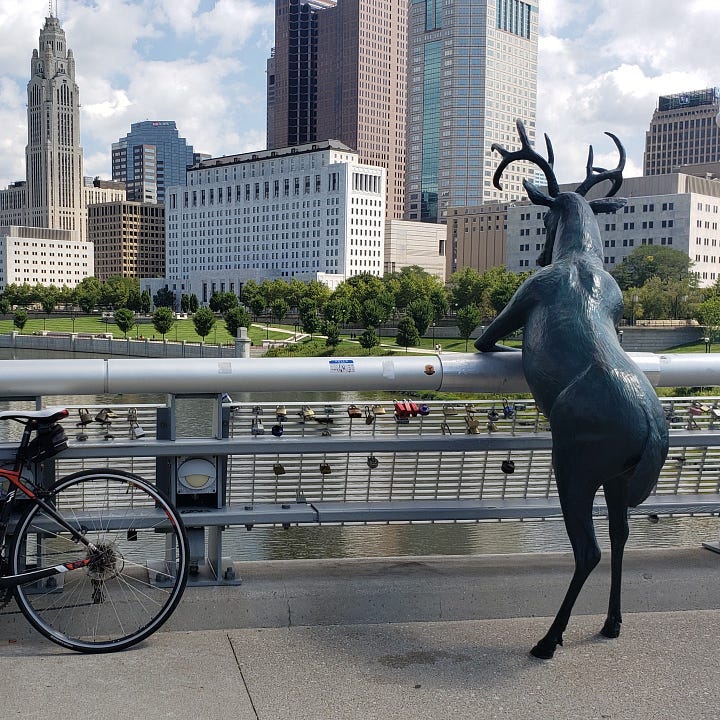A cultural shift on the trail
Trails transform as they grow and connect in a network
I was in the audience of a Rails to Trails Conservancy (RTC) webcast at WOSU in mid-December. “America’s Trail Networks—An Exploration of the Scope and Impact of the Nation’s Developing Trail Networks. featured a panel of RTC, Latino Outdoors, and the Mid-Ohio Regional Planning Commission (MORPC) speakers discussing the latest RTC research on trail networks.
Trail networks are where two or more trails connect to form a path that connects more people and places over a great distance. Three Trails in my county connect five communities. This trail network is part of the Ohio to Erie Trail that connects cities, towns, and villages across the state.
I found this webcast exciting and promising as a trail community member. The RTC blog post accompanying the webcast gives a good summary of the research and facts shared by the webcast speakers. There is a cultural shift occurring in the United States as trails connect to a trail network.
More trails, longer trails, and connected trails
Rail trails began as the rebirth of abandoned rail corridors as places to gather, walk, run, and bike. They were often centered around a city or town and the source of community pride. People noticed when the number of trails grew, became longer, and connected to more places. This expansion gave birth to a business and outdoor tourism economy and provided many people with a non-motorized corridor for commuting to work and everyday tasks.
Below are a few bullet points from the webcast on the progress trails made to date and the transformations underway as trails connect.
There are 150 connected trail networks in the United States, at least 1 in every state.
50% of Americans live in a county where a trail network exists or is being constructed.
The use of local trails increases by 80% when the trails are part of a trail network.
The United States has 40,000 miles of multi-use trails with 25,000 of these being rail-trails.
The 2021 Infrastructure Investment and Jobs Act doubled the investment in trails.
Trail networks in Central Ohio
I live in Central Ohio. I am fortunate to live in a place where trail networks are connected and growing. I can cycle 50 miles on the trail to Columbus and beyond. Below are a few bullet points shared by William Murdock, executive director of the Mid-Ohio Regional Planning Commission, that demonstrate a strong commitment to the connectivity of trails and trail networks.
There are 200 miles of trails in Mid-Ohio with another 500 miles envisioned by MORPC.
The Ohio to Erie Trail and Great American Rail Trail, trail networks passing through Columbus, fuel the momentum to build and connect more trails.
A primary focus is providing equitable access to neighborhoods and communities currently not connected to a trail.
MORPC typically budgets $4M in a budgeting cycle for trails. The recent budgeting cycle includes $60M for trails.
MORPC has invested in trail town studies to explore how a trail town program would look in Mid-Ohio’s urban neighborhoods, suburbs, and small towns.
The cultural shift of trails
The cultural shift RTC found in its research supports the investment in and expansion of trails and the networking of trails. Most Americans view trails as only a place to hike or bike. This view is not the reality. People are commuting to work, the doctor, or grocery on a trail every day. Trails are an integral part of many people’s lives.
People spend their vacation time visiting trails and communities along the trail making the trail a revenue and tourism generator. The health and wellness benefit of trails is often overlooked as a free-of-charge and close-to-home respite from stress and a place to get away from it all. Each of these benefits becomes more visible as trails expand into a connected network.
What trail network do you visit the most often?
The transformation of trails is here and growing!
Tom on the Trails






